What is a Geode?
A geode is a spherical or round rock characterized by its unique hollow cavity, intricately lined with an array of sparkling crystals. Unlike solid rocks known as nodules, geodes feature this captivating void within them, setting them apart in geological wonders. The crystals that adorn the inner surface of a geode can vary widely, with common examples including agate, jasper, chalcedony, quartz, amethyst, and calcite.
Geode is derived from the Greek word Geoides, which means “earthlike.”
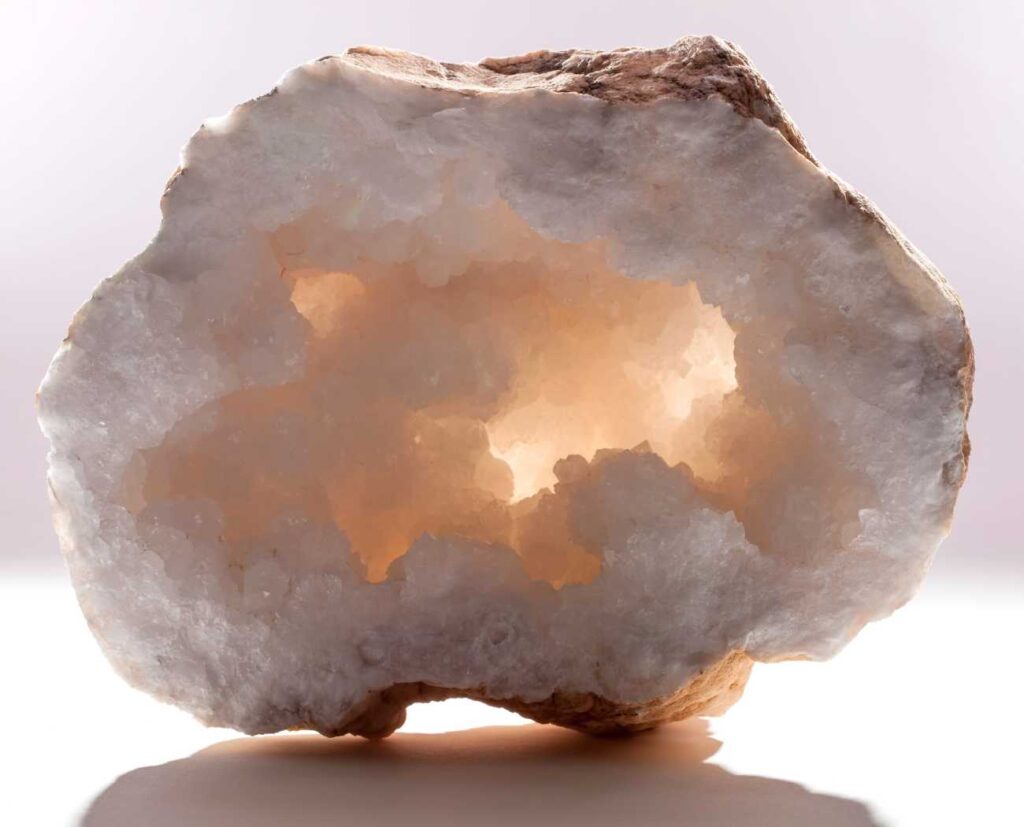
How are Geodes Formed?
Geodes begin as bubbles in volcanic rock, animal burrows, tree roots, or mud balls in sedimentary rock. Over a long time (millions of years), the outer shell of the spherical shape hardens, and water containing silica precipitation forms on the inner walls of the hollow cavity within the geode. The silica precipitation can have any variety of dissolved minerals, the most common being quartz, but amethyst and calcite are also found.
Layers of silica cool, forming crystals of different minerals within the cavity. Other types of silica cool at varying temperatures, thus creating layers of different types of mineral crystals.
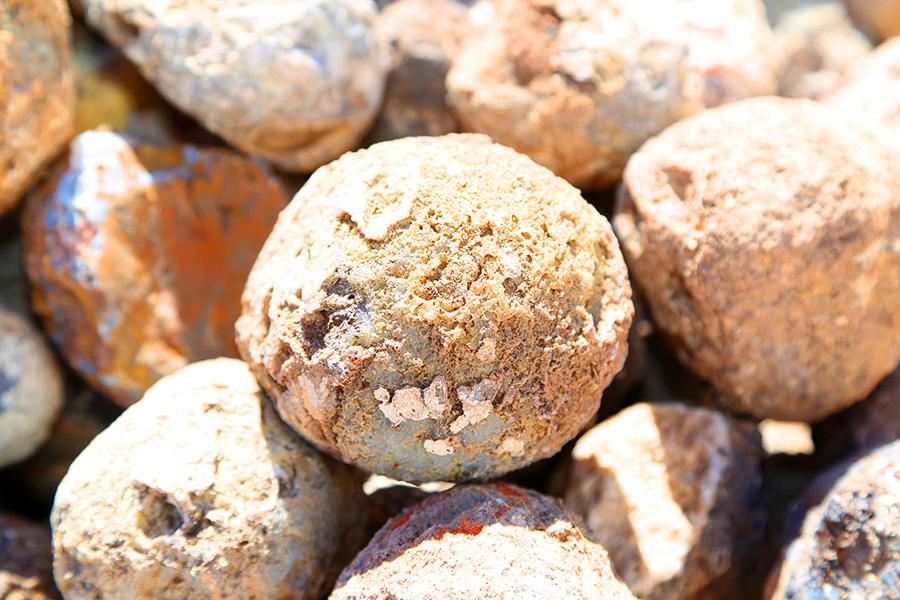
Types of Crystals in Geodes
Each geode is unique in composition, which can only be truly discovered when cracked open or cut with a rock saw. The size and formation of the crystals and the different shades of color within the crystals make each geode unique. The geode’s rough exterior does not indicate the secrets held within its core. Some geodes feature glistening quartz crystals, while others boast the regal purple hues of amethyst. The most prized contain rare amethyst crystals or black calcite. There are geodes adorned with agate in vibrant bands of colors and those showcasing the delicate beauty of calcite crystals. The anticipation never fades for those who curiously collect buckets full of round geodes and eagerly expose the secrets of each sphere-shaped rock.
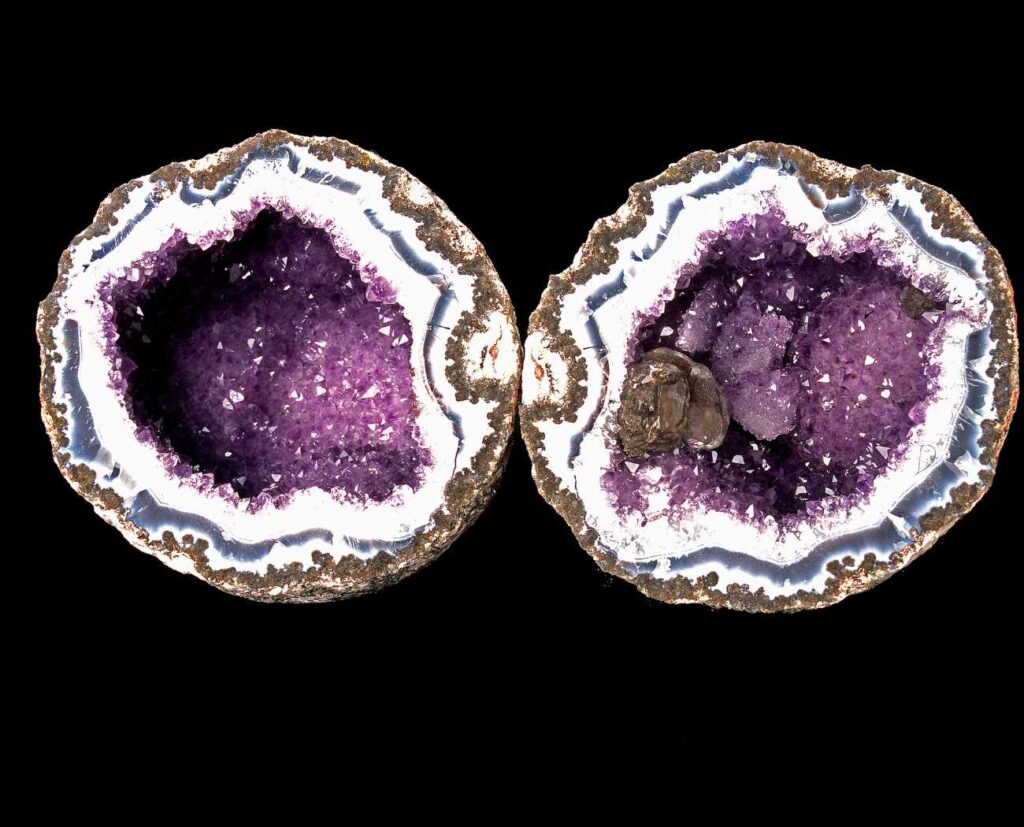
Where Can You Find Geodes?
Geodes are found worldwide, but the most concentrated areas are in the deserts. Volcanic ash beds, or regions containing limestone deposits, are common geode locations.
There are many easily accessible geode collecting sites in the western United States, including in California, Arizona, Utah, and Nevada. While geodes can appear in diverse landscapes, they are concentrated in areas enriched with volcanic ash beds and regions abundant in limestone deposits. Deserts, in particular, hold a special allure for geode hunters, as they frequently conceal these spherical wonders beneath their arid sands.
Geodes in the United States
Geodes in California
California is known for producing a variety of geodes, including amethyst, quartz, and chalcedony geodes. Notable locations include the Hauser Geode Beds.
Hauser Geode Beds in California
The finest concentration of geode sites in Southern California is in Riverside and Imperial counties. The most famous of these sites is called the Hauser Geode Beds, located at Wiley Well in the northern region of Imperial Valley, CA. The North Black Hills Geode Beds and the Cinnamon Geode Beds are in the same area. Joel F. Hauser is the man who discovered the geode beds.
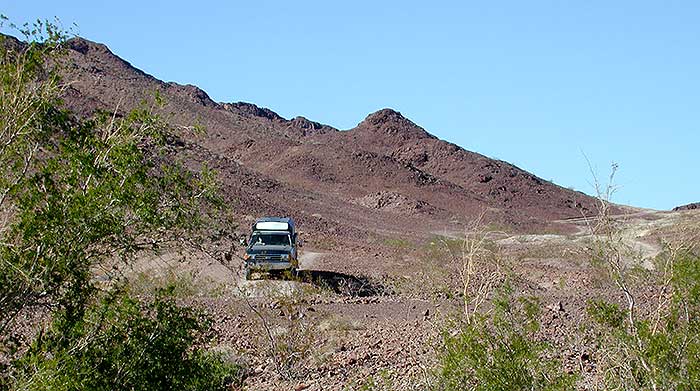
Geodes in Arizona
Arizona is famous for its amethyst, quartz, and chalcedony geodes. The state offers numerous collecting sites, including the famous Apache Tear geodes.
Geodes in Utah
Utah is known for its unique septarian geodes, which are distinctive due to their mud-filled cracks and calcite crystals.
Geodes in Nevada
Nevada is home to geodes featuring various minerals, including quartz and chalcedony. Virgin Valley is a well-known area for geode hunting.
Geodes in Iowa
Iowa is famous for its geodes, the official state rock. The geodes found in Iowa are lined with quartz and chalcedony crystals.
Geodes in Kentucky
Kentucky is known for its geodes, primarily lined with quartz and calcite crystals.
Geodes in Indiana
Indiana has geodes with quartz, calcite, and other mineral crystals. Geodes can be found in various parts of the state.
Geodes in Missouri
Missouri is renowned for its quartz and chalcedony geodes. The Keokuk Geode State Park is a popular geode collecting location.
Geodes in Illinois
Illinois is known for its geodes lined with quartz and calcite crystals. The state offers geode-collecting opportunities in various areas.
Geodes in Ohio
Ohio features geodes with quartz and calcite crystals, which can be found in different regions.
Global Geode Hotspots: Exploring Crystal Treasures Around the World
Geode enthusiasts can explore many geode-rich regions worldwide, each offering a unique geological history and an array of crystal formations. Mexico stands out for its stunning amethyst and quartz geodes, particularly in the renowned town of Chihuahua. Meanwhile, Brazil boasts some of the world’s most exquisite amethyst geodes, primarily from Rio Grande do Sul, and is also known for agate and quartz varieties. Uruguay is celebrated for its deep purple amethyst geodes, notably in Artigas. Morocco offers an array of unique and diverse geode specimens with striking mineral and color combinations. Australia, Namibia, Spain, Madagascar, and India are additional geode-rich countries, each offering distinct geode treasures, from agate and quartz to amethyst.
How to Identify a Geode
Identifying geodes can be an exciting and rewarding endeavor for geology enthusiasts. These spherical wonders often have a nondescript exterior, making it essential to rely on a few key characteristics for recognition. The first clue is their round or spherical shape, often resembling an ordinary rock. However, their true nature becomes apparent when you tap or gently knock on the surface. Geodes typically produce a hollow, echoing sound due to the void within. Additionally, their weight is often lighter than expected for their size. Once you’ve detected these initial hints, the next step is to carefully inspect the outer surface for any signs of crystalline formations, such as tiny, protruding crystals or mineral deposits.
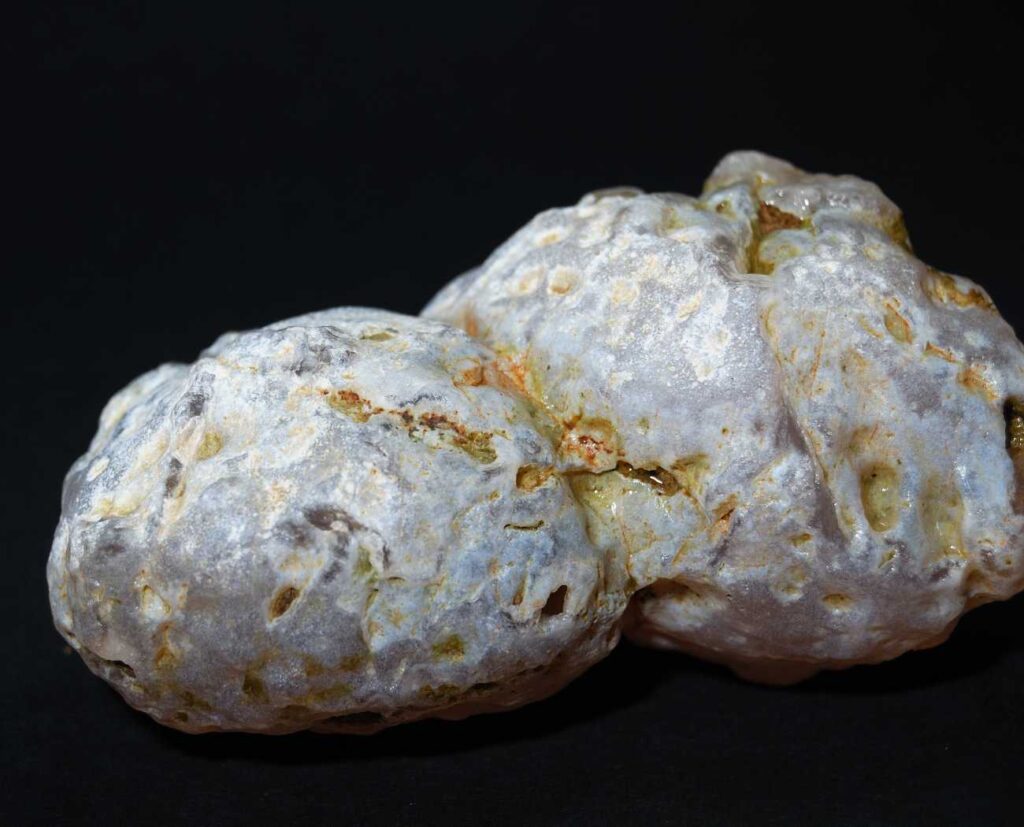
Geode Collecting Tips
To enhance your geode hunting experience, consider these valuable tips. First and foremost, ensure you have the right tools, including a rock hammer, chisels, a collecting bucket, safety goggles, and sturdy gloves to protect yourself while cracking open geodes. Research geode-rich locations in your area or desired destination, as geological maps and local knowledge can be invaluable. When collecting, consider the geological context; geodes are often found in sedimentary rock formations or volcanic areas. Remember to ask for necessary permits if required. Lastly, always respect the environment and leave no trace, preserving these natural wonders for future generations of geode enthusiasts.
How to Open a Geode
Opening a geode is a thrilling process that unveils the hidden wonders within these spherical marvels. First, place the geode in a cloth bag or towel to prevent flying debris. Using a rock hammer or chisel, carefully tap around the circumference of the geode until it cracks open. Wear goggles to protect your eyes. Take your time and apply gentle pressure to avoid shattering the crystals inside. Once broken, you’ll reveal the breathtaking crystals lining the inner cavity. You can use a rock saw to cut open the geodes if you have a rock saw available.
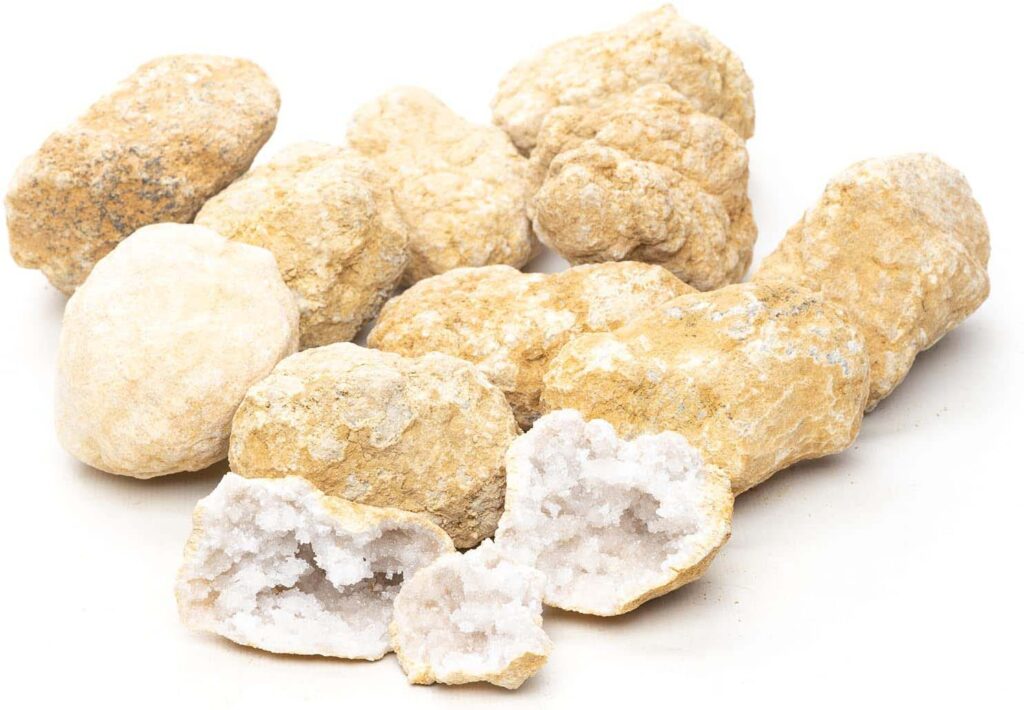
Geodes for Sale
DesertUSA offers a diverse selection of geodes for sale in our online store, featuring items like ‘Break at Home’ geode kits, Amethyst Geode Pieces, Amethyst Geode Bookends, Agate Geode Bookends, and Geode Lamps for enthusiasts and collectors.
Geode Articles & Links
Rocks, Minerals & Geology Index
Collectible Rocks and Minerals
Cinnamon Geode Beds – California’s Colorado Desert
Hauser Geode Beds – Wiley Well District near Blythe, CA
Potato Patch Thundereggs & Geodes – Wiley’s Well Rockhound District CA
Thundereggs at Rainey’s Well – California’s Colorado Desert
Thundereggs at the Straw Beds – Wiley’s Well Rockhound District, CA